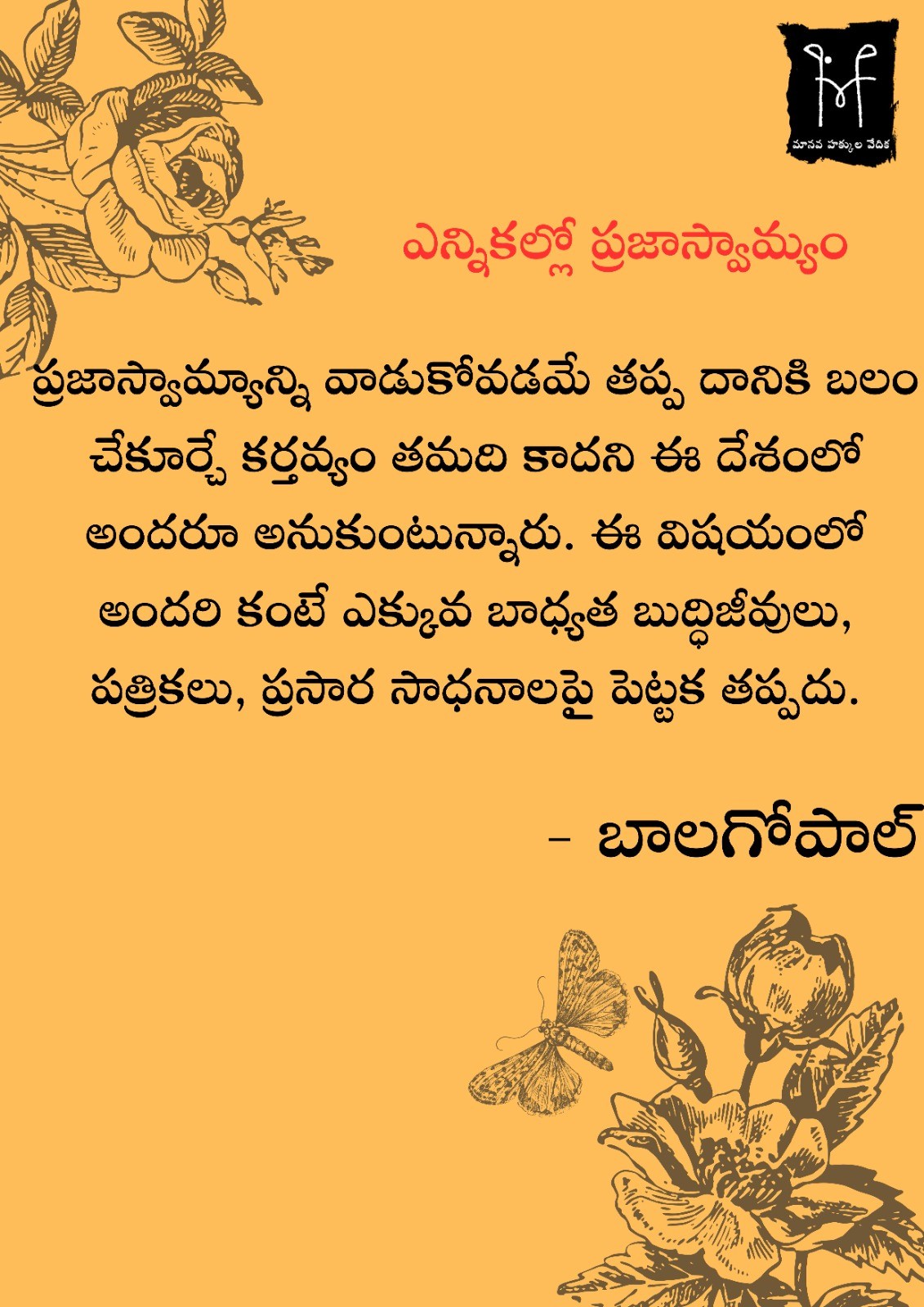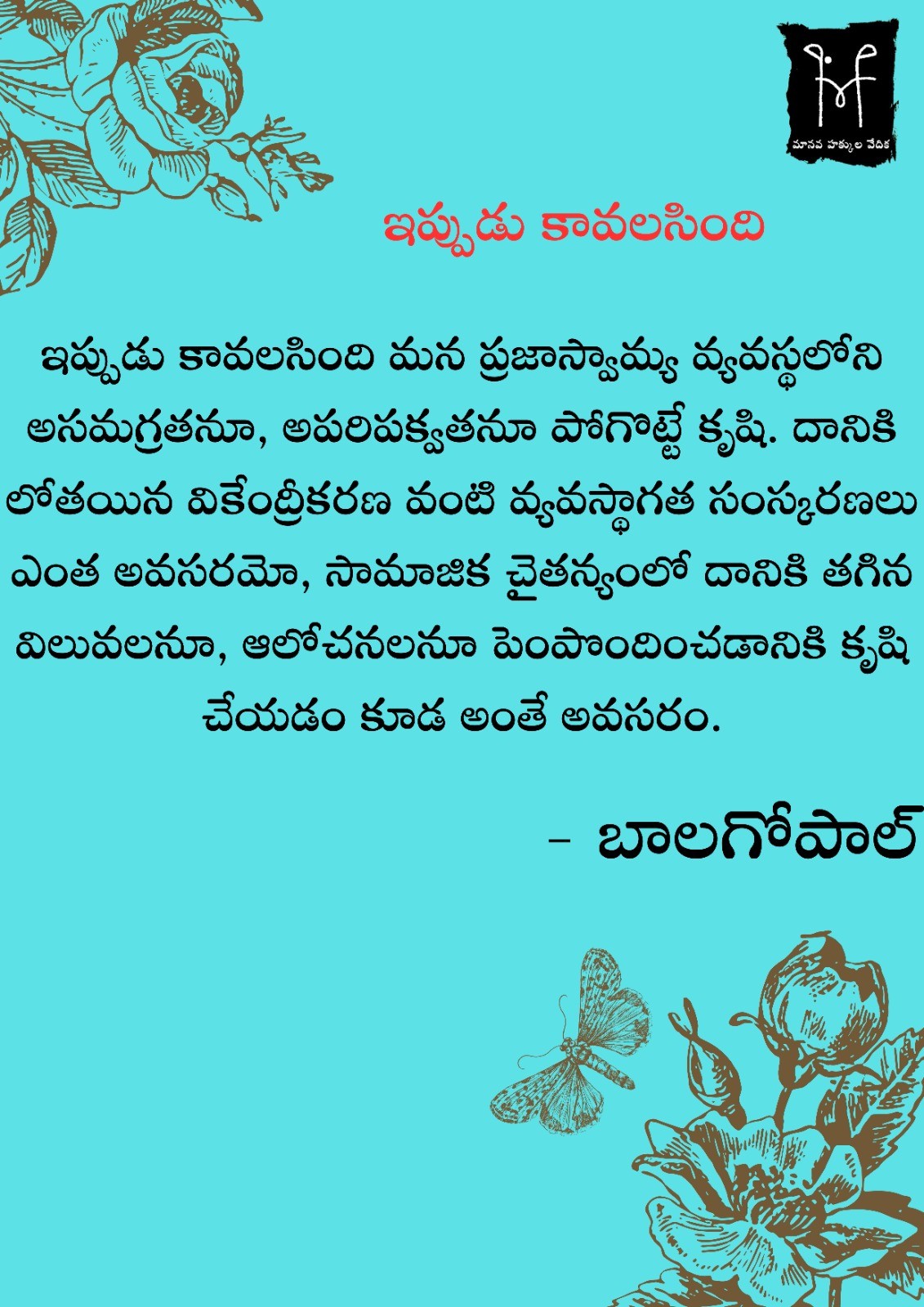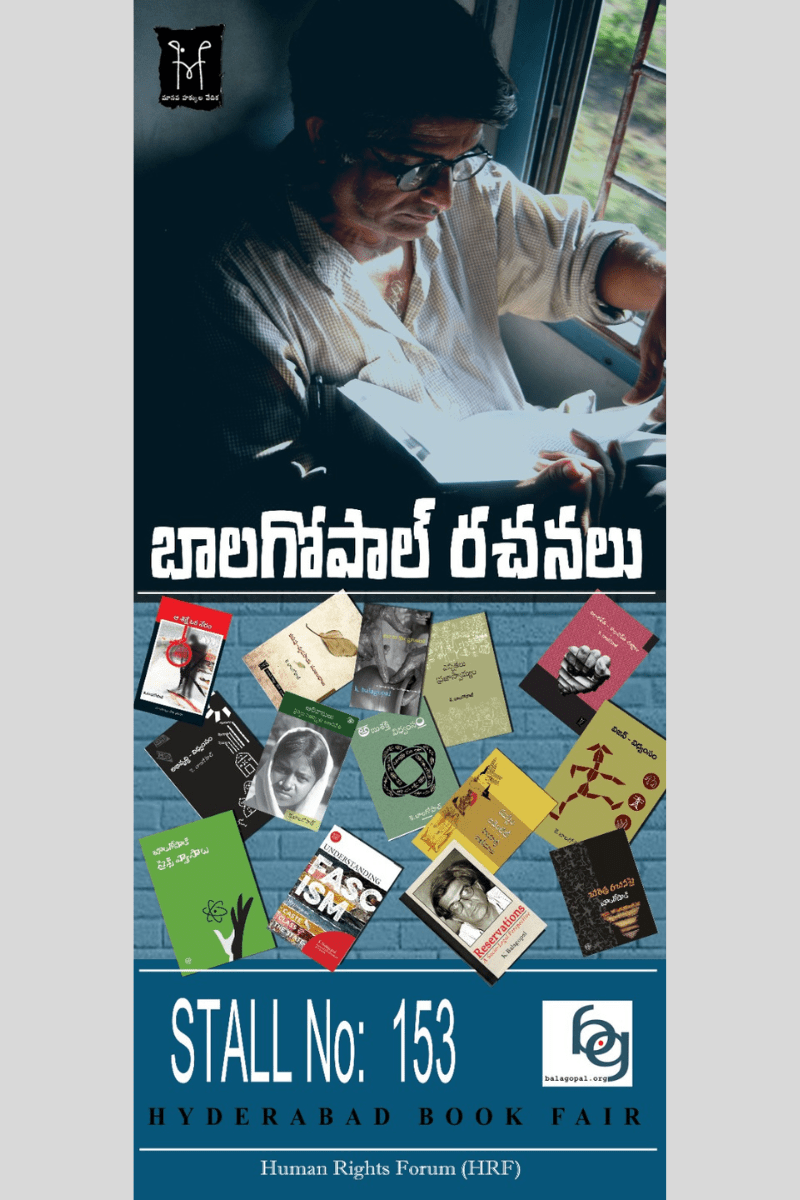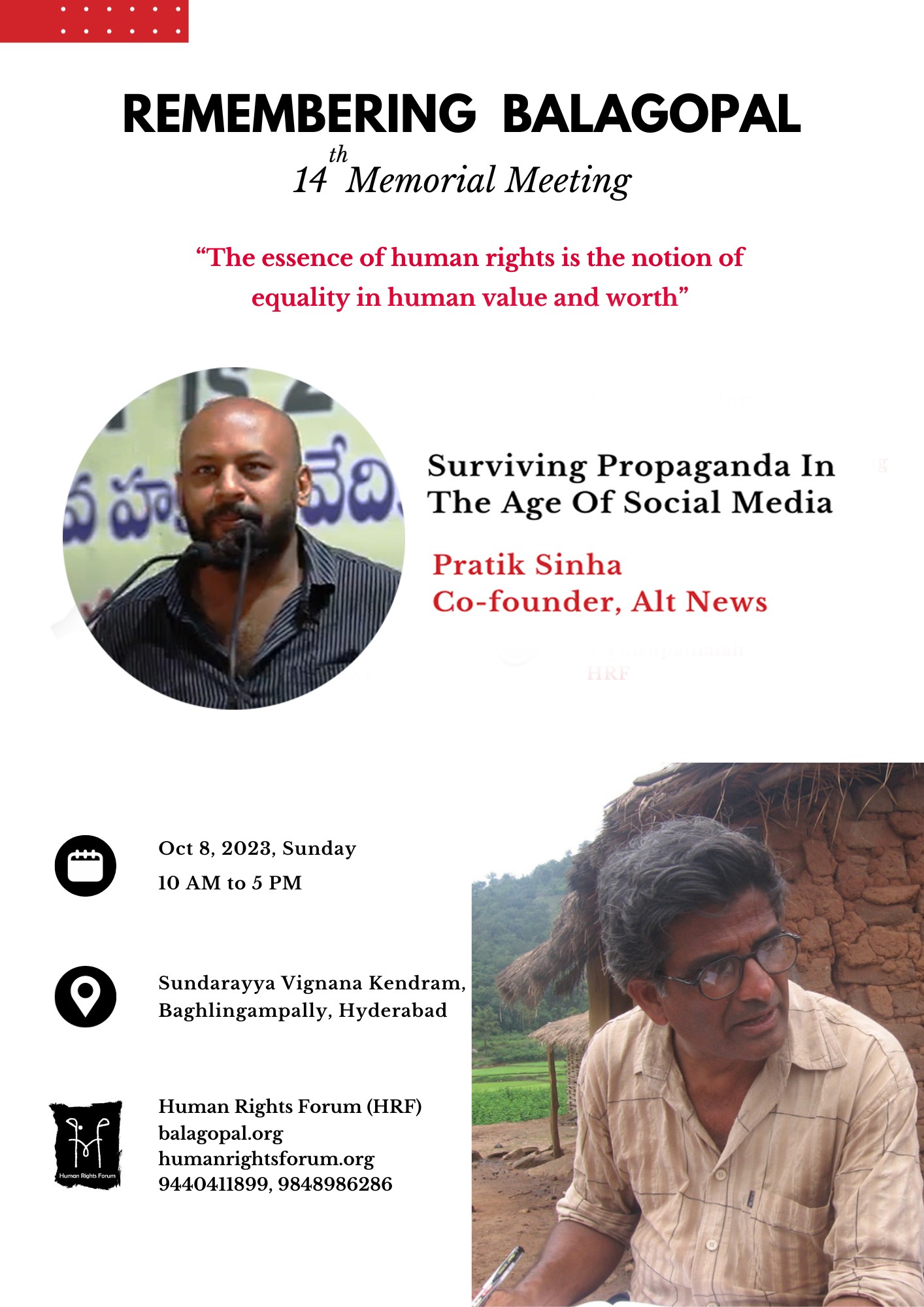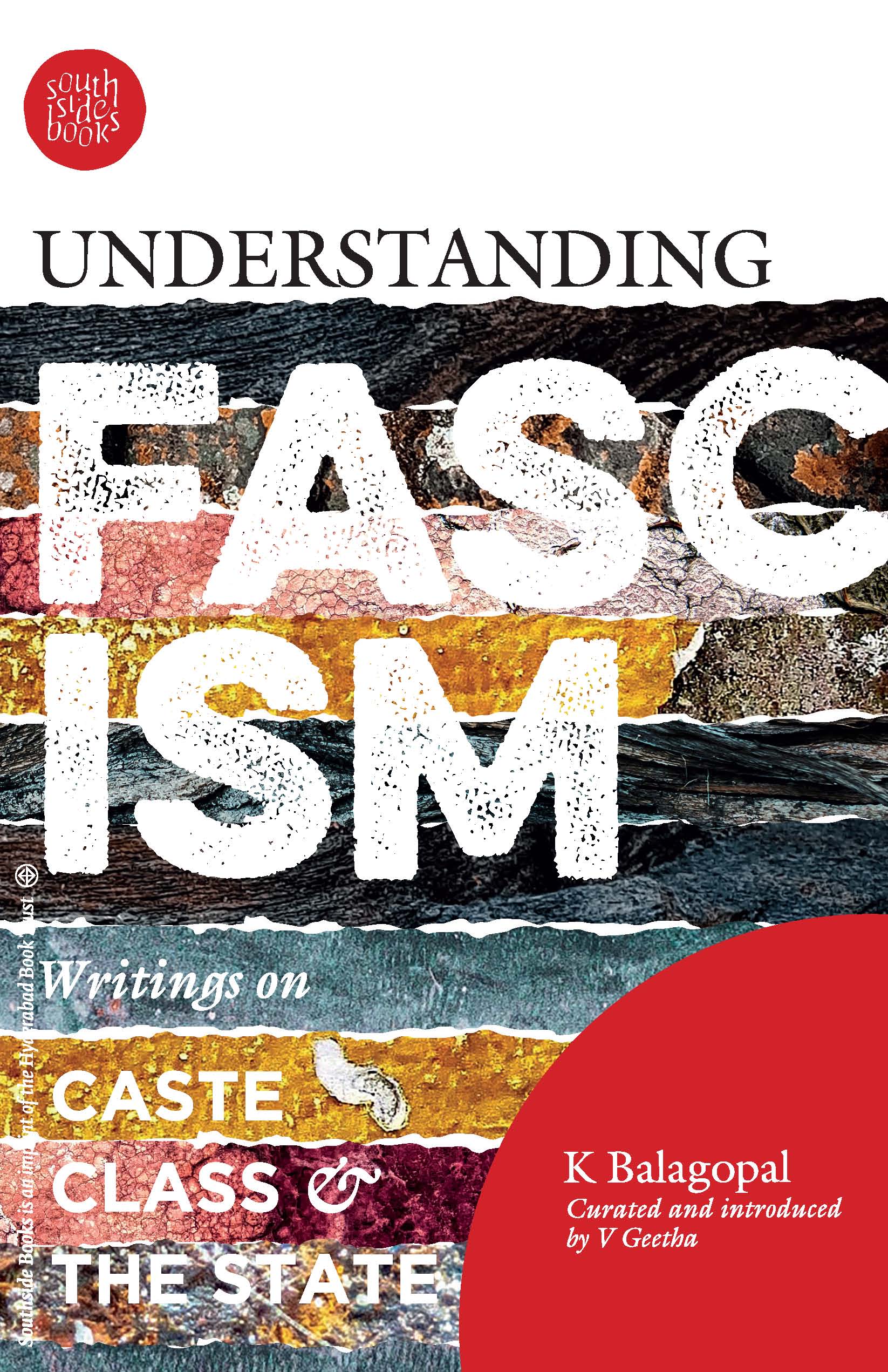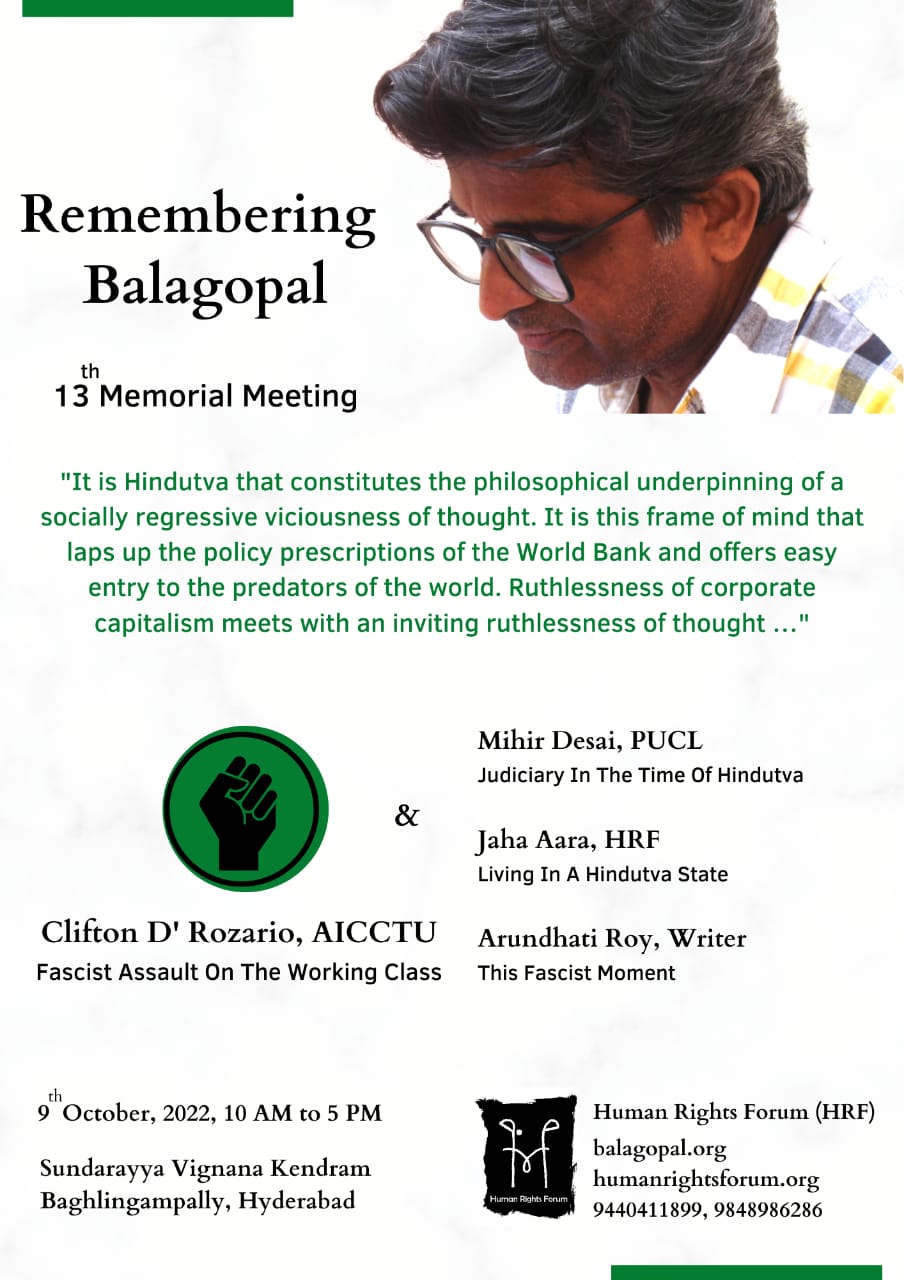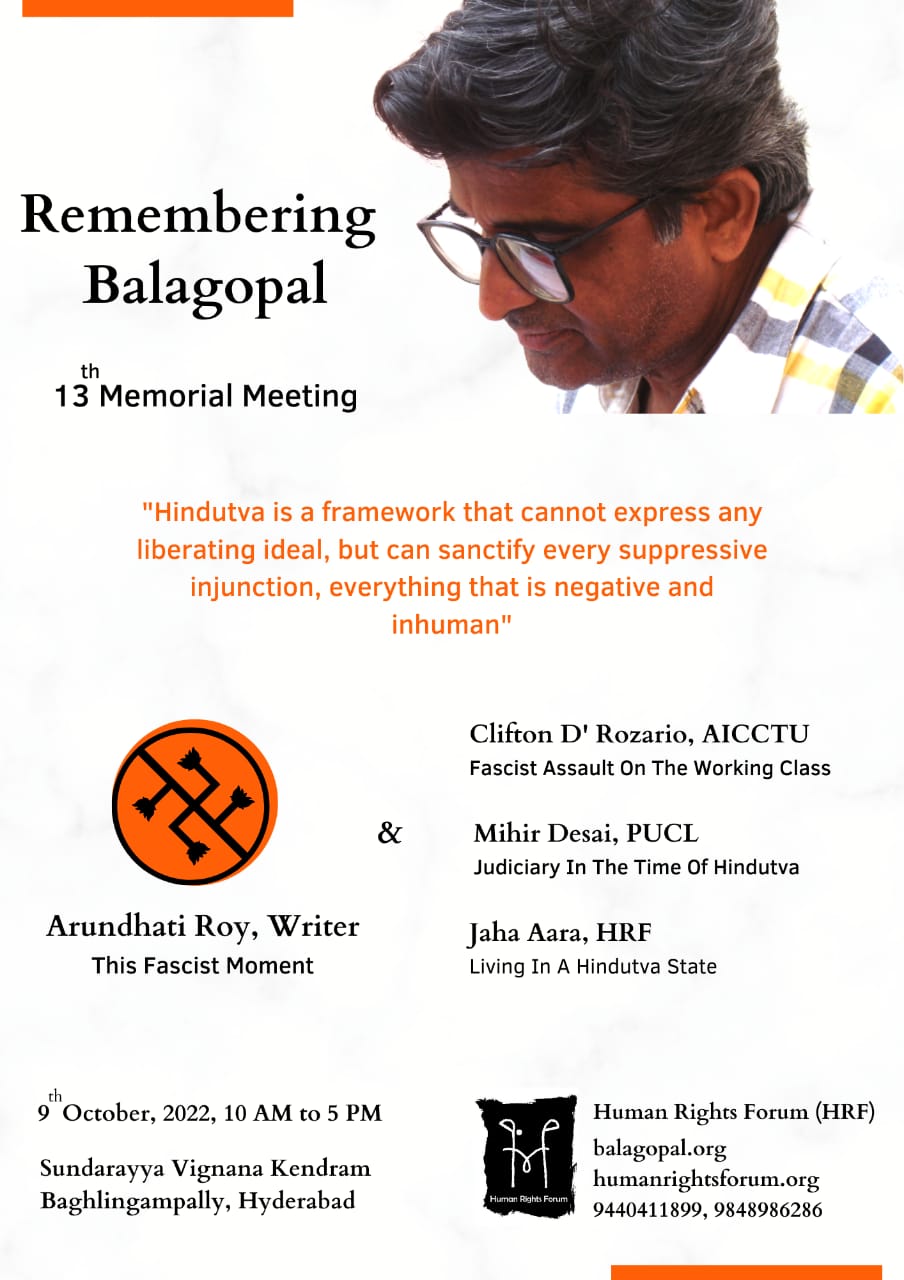click on the link for download
https://balagopal.org/probings-in-the-political-economy-of-agrarian-classes-and-conflicts/ …….
An inspiring example of “Living Knowledge” – Jean Dreze
Life was pretty quiet at the Indian Statistical Institute, New Delhi, when I was a PhD student there forty years ago. When we were not studying, we were mostly reading, playing carrom, or watching Doordarshan. Among us was an enigmatic post-doctoral fellow who seemed mostly absorbed in deep thought (I certainly missed the connection between his presence there and the anti-imperialist posters that sprang up overnight from time to time). His name was K. Balagopal.
Balagopal was exceptionally bright and I am sure that he could have had a flourishing career as a professor of mathematics in any of India’s best research institutes. Instead, he returned in 1981 to Warangal, where he had studied earlier. After a brief episode of teaching, he immersed himself in the civil liberties movement there. From 1983 to 1998, he was the General Secretary of APCLC, the Andhra Pradesh Civil Liberties Committee. (Later he became a founder-member of the Human Rights Forum, in which he was active until his death in October 2009.)
The essays in this book were written in the early years of Balagopal’s association with APCLC, when he was in his early thirties. The first part of the book is an eye-opening account of a series of human rights violations in undivided Andhra Pradesh, including “encounters” of Naxalite – or suspected Naxalite – activists. The scenario is ominously similar in most cases: activists are killed by the police in cold blood, and then they are said to have died in an encounter where the police fired in self-defence. The technique may or may not have been invented in Andhra Pradesh, but it was used there with abandon and impunity for decades, and also became routine in other parts of the country, from Mumbai to Chhattisgarh and Kashmir to Uttar Pradesh. Aside from being rewarded and decorated as they used to be, many “encounter specialists” are now folk heroes. Some have even inspired films (Ab Tak Chhappan for one) and video games.
The tolerance of encounter killings is part of a series of deliberate aberrations in the practice of civil liberties in India. The country prides itself on being the world’s largest democracy, but routine assassination by the police does not seem to stir the conscience of the media, the courts, the parliament or other presumed guardians of democratic values. The same applies to the tolerance of torture, again on a routine basis across the country. The treatment of undertrials is another example: hundreds of thousands of powerless people have been deprived of the elementary right to being held innocent until proved guilty, and made to languish in jail for years on end without any inkling of the progress of their trial. If all these aberrations are tolerated, I suspect that it is because of a tacit understanding among the ruling classes that they are necessary for the maintenance of “law and order” – in other words, to keep people in their place.
The social background of the Andhra Pradesh encounters is grim beyond belief. At a time of absorbing debates about the mode of production in rural India and its possibly “semi-feudal” character, Balagopal travelled the length and breadth of Telangana and saw plain feudal oppression in “a fantastic variety of forms” (p. 21). The doras (landlords) were desperately trying to cling to their old privileges, including the abominable practice of vetti (free labour), through violence if need be. It is violence, again, that enabled elements of the landed castes to consolidate into a new “provincial propertied class”, with interests in modern farming but also extending to real estate, transport, cinema, contract work and what not. Meanwhile adivasis, dalits and other dispossessed groups were reduced to a reserve army of casual labour. It is in this harsh and violent environment that the Naxalites helped people to stand up for their rights, resist vetti, demand higher wages, retrieve usurped land, and more. Sure enough, this led to new waves of repressive violence. Encounters, arrests and torture engulfed Andhra Pradesh for years on end.
In the second part of the book, Balagopal discusses various aspects of the political economy of Andhra Pradesh in the light of current events. Then Chief Minister N.T. Rama Rao (known as NTR) comes for relentless criticism, whether it is for giving a free hand to the police to kill Naxalites, or for using the privileges of his official position to acquire illegal property, or for caving in to upper-caste agitations against reservation in public employment. In one article (“Censorship by Force”), richly illustrating Balagopal’s ability to think out of the box, he discusses the significance of the yellow press in Andhra Pradesh. It is unlikely that many historians or scholars would regard the yellow press, with its distorted facts and vulgar idiom, as worthy of their attention, but Balagopal knew better.
Another enlightening essay in this part of the book is “Anti-Reservation, Yet Once More”, where Balagopal discusses upper-caste agitations against the expansion of employment reservation for “backward classes” (BCs). This subject tends to create much confusion and doubt, but Balagopal takes a clear stand in favour of the demand for expanded reservation. He brings out the reactionary character of the anti-reservation agitations and warns of their potential for developing into a major counter-attack on the limited gains made by the underprivileged through protracted struggle. This was a prescient warning: the expansion of the Hindutva movement in the decades that followed had more than a little to do with the resentment of the upper castes against the egalitarian demands of democracy.
All these essays build on Balagopal’s sharp understanding of the society and politics of Andhra Pradesh. He largely dispenses with prefabricated theories and reasons from first principles. In this respect, among others, his writings often remind me of Noam Chomsky’s. Even the skilful use of sarcastic humour is similar. The book is an inspiring example of “living knowledge” – knowledge based on active engagement with the world rather than just observing it from a distance. As Balagopal himself puts it, “you can properly interpret the world only in the course of changing it” (p. 117).
With characteristic fearlessness, Balagopal speaks truth not only to power but also to his own friends. If he has plenty of harsh words in this book for landlords and the police, he has some for intellectuals – including Left intellectuals – as well. He did not hesitate, for instance, to question their lack of engagement with caste: “A peculiar caste-blindness affects Indian intellectuals, especially the Marxists, who will even pretend they have no caste if you allow them to.” Needless to say, he does not dismiss intellectuals, but he reminds us that it is important to examine where they come from: “Every writer is a member of a socially defined genus, and the taxonomy of intellectuals is as necessary for social and historical studies as that of animals is for Zoology” (p. 116). Classic Balagopal!
Such are some of the impressions I retain from the book. There is, of course, much more to it. The themes I have mentioned, important as they are in their own right, also act as a peg for wide-ranging thoughts on India’s political economy. Whether he discusses the character of agrarian classes, or the role of caste in reproducing class power, or the historic transformation of tribes into castes, or the reduction of secularism to “multicultural communalism”, or the function of the State as a means of surplus extraction, Balagopal invariably sheds new light on old debates. His essays also bring to life many colourful personalities, especially among the comrades who were close to his heart.
In these early essays, Balagopal does not write about the dark underbelly of the Naxalite movement in Andhra Pradesh. Perhaps that was yet to become a serious issue, or perhaps he decided to keep the focus on State atrocities and avoid tarnishing a movement he broadly supported. Many years later, he did write at length (in an essay called “Chikati Konalu” or “Dark Angles”) about the corrupting influence of violence in the Naxalite movement. The purpose of that essay was not to pass judgement on the movement: Balagopal acknowledged that it had many achievements to its credit and explicitly refrained from weighing its pros and cons. Instead, he wrote about the dark side of Naxalite violence, because he felt that it was important for intellectuals to understand and discuss it.
The aim of the Naxalites, he pointed out, was not just to “work for the solution of people’s problems”, but also to “capture State power in the name of the people”. He warned against the abuses that inevitably develop when violence becomes a means of “dominance over society”, exercised without principles of justice and humanity. He illustrated his argument with an astonishing catalogue of Naxalite atrocities in Andhra Pradesh over the years. The problem, he argued, is not just the human cost of these atrocities (intolerable as it may be) but also that unprincipled violence ruins the integrity and credibility of the movement: “The means that we use are not merely instruments to achieve our ends. They in turn cast an influence upon us. They cast an influence upon the whole society.” In the same essay, he also discussed related issues such as factionalism, lust for power, and intolerance towards any opposition. It is a pity that Balagopal’s courageous intervention did not lead to a wider debate about the nature and future of the Naxalite movement.
The essays in this book reflect a particular phase of Balagopal’s life and thought, spanning most of the 1980s. In his own words, he had a particular “political framework” at that time: “It is the traditional framework of capture of State power by the working people in order to build socialism and transform society towards the stage of Communism” (p. 284). This is as clear as it gets, but it leaves out a lot. I am not sure whether Balagopal ever gave up this framework, but he certainly modified and enlarged it, partly under the influence of popular movements.
Despite the passage of time, these essays have not lost their relevance. For one thing, they delve into a range of issues that are likely to remain with us for some time. Balagopal’s analysis of the character of Indian society and politics, in particular, is as illuminating today as it was forty years ago, even if it needs to be adapted as circumstances evolve.
For another, we have good reason to treasure these essays as a model of a sort of political writing that is becoming rare today – forthright and fearless. There is no pandering here to the jargon of academia, or to the contest for attention, or to the sensitivities of people in positions of power and influence. Sometimes I wonder whether Balagopal benefited from having studied mathematics rather than social sciences. Perhaps it helped him not just to think clearly but also to talk straight.
Jean Drèze
Ranchi, 1 October 2021


